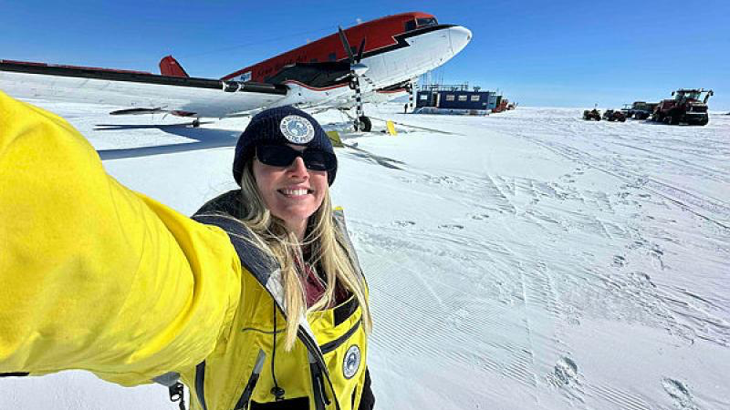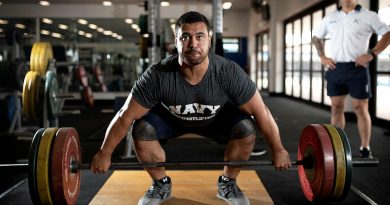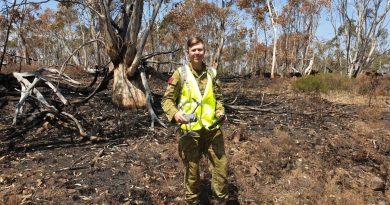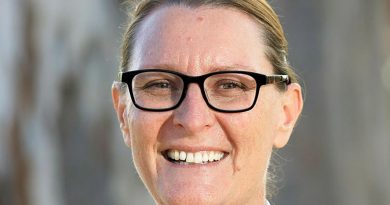A glimpse of life on the ice

People who think meteorologists in Australia are under pressure to get the forecast right should spare a thought for those working in frigid extremes with the Australian Antarctic Program.
CAPTION: Lieutenant Holly Boubouras in front of a Basler aircraft at Casey Skiway before a flight to Bunger Hills, Antarctica.
One of those was Lieutenant Holly Boubouras, a Navy meteorologist from the Maritime Geospatial Warfare Unit, deployed to Casey Station during four months over summer.
She was one in a long line of Navy meteorologists who’ve filled a role each season since 2009.
Beyond providing daily forecasts for the Australian stations, Casey, Mawson and Davis, the on-watch meteorologist also provides forecasting for field science projects, marine forecasts and operations support.
It’s a job made more complicated by what’s called the ‘A-factor’, or Antarctic Factor, according to Lieutenant Boubouras.
Meteorologists must grapple with limited observation equipment and satellite coverage, along with strong winds and intermittent internet access.
“Blizzards are a common occurrence, and advanced warning is required for each work group to secure their equipment to avoid it becoming a projectile hazard,” Lieutenant Boubouras said.
They also produce aviation forecasts for local rotary and fixed-wing flights, and flights from Hobart to Wilkins Aerodrome.
Lieutenant Boubouras provided route forecasts for the Million Year Ice Core Project traverse team, who travelled 1200km inland from Casey station.
The extent of tasks often means the station’s meteorologist office opens at 4am, with three forecasters on a watch-keeping roster and one supporting from Hobart.
For Lieutenant Boubouras, the extreme conditions of Antarctica make it the highpoint of a meteorologist’s career.
“The absence of roads makes aviation operations crucial, where meteorologists play a key role in ensuring safe flights through monitoring a range of hazards and weather phenomena specific to Antarctica,” she said.
Lieutenant Boubouras said her deployment to such a unique environment significantly enhanced her skills as a meteorologist.
“The most recent summer season facilitated the busiest aviation program the Australian Antarctic Program has ever undertaken, with 16 A319 Airbus and seven RAAF C17A Globemaster inter-continental flights, amongst others,” she said.
“We also provided forecasts for RSV Nuyina and RV Investigator, coastal water forecasts and route forecasts for the traverse team travelling 1200km inland for the Million Year Ice Core Project.
“These operational forecasts increased my workload capacity and ability to convey meteorological forecasts to a variety of stakeholders.”
Lieutenant Boubouras will bring the skills and experience she obtained in Antarctica back to her Navy forecasting.
Before reaching the continent, Lieutenant Boubouras underwent survival training, including sleeping overnight on the ice.
She also visited remote locations such as Robbo’s Hut, offering a glimpse into the challenging life of early Antarctic pioneers, had a summer swim in freezing waters surrounded by towering icebergs, and visited the penguin colony at Shirley Island.
“For a more intimate encounter of the environment, inflatable rubber boat tours in Newcombe Bay unveil the mesmerising beauty of icebergs and surrounding islands,” Lieutenant Boubouras said.
“Antarctica itself transforms from simply being a frozen, barren continent, to a testament of the resilience of both the environment and those fortunate enough to call it home, making the frozen continent a place of unparalleled fascination and enduring awe.”
.
.

.
.





